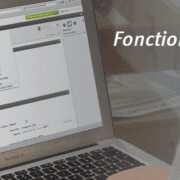Dynamic versus Static URLs with Google
 Google revises a long-going myth: Against all general assumptions, dynamic URLs can now be easily crawled by Google. The search engine giant only recommends adapting the look of dynamic URLS to static URLs when there is enough time and knowledge available to remove the correct parameters. With the shop software from ePages, shop operators are thus on the right side. Read more details in the following.
Google revises a long-going myth: Against all general assumptions, dynamic URLs can now be easily crawled by Google. The search engine giant only recommends adapting the look of dynamic URLS to static URLs when there is enough time and knowledge available to remove the correct parameters. With the shop software from ePages, shop operators are thus on the right side. Read more details in the following.
What Is a Static URL?
A static URL does not change and contains no URL parameters (e.g. session IDs). URLs for pages such as www.example.com/news/january08 are hard-coded, which makes it difficult to make changes (e.g. in shops whose product range changes often).
What Is a Dynamic URL?
Dynamic URLs often arise when the content of a page is stored in a database and is only output depending on the situation. Dynamic URLs contain parameters such as session or product IDs and have characters such as ?=&.
A disadvantage with dynamic URLs is that they are not as easy to understand as static URLs and that one and the same content is reachable via different URLs. Webmasters thus frequently give dynamic URLs a static look in order to accommodate both users and search engines.
How Well Can Google Read out Dynamic URLs?
Dynamic URLs can be read out equally as well as static ones when they are not too long. A dynamic URL should not contain more than three parameters.
Dynamic URLs, in the case of database-controlled content, are always better than URLS that look like static ones. If you would, however, like to perform the adaptation, you should know precisely which parameters are important and which ones can be deleted.
In principle: Google is able to find its way through relevant and irrelevant parameters that are dynamically generated. Thus, an adaptation is not mandatory.
You can find out more in the Google webmaster blog.
What Does this Mean for ePages Shops?
The ePages shop software outputs dynamic URLs and was criticised for a while for not allowing itself to be fully optimised for Google. With the contribution of the Google webmaster blog, these misgivings can thus be dispelled.
Nevertheless, ePages is already working on preparing a short and descriptive URL structure.
Lorem ipsum dolor sit amet, consetetur sadipscing elitr, sed diam nonumy eirmod tempor invidunt ut labore et dolore magna aliquyam erat, sed diam voluptua.





Leave a Reply
Want to join the discussion?Feel free to contribute!